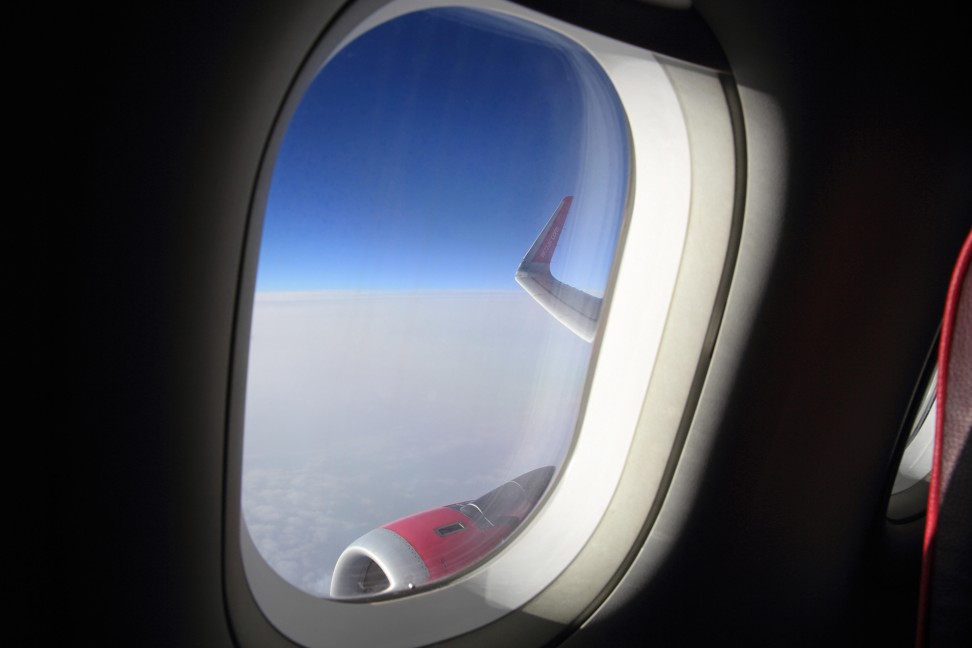
Why people cry on planes: the ‘Mile Cry Club’ explained and other emotional and sensory risks
- Why do people start sobbing over Deadpool or airline safety videos on planes? There could be a host of reasons, from feeling a lack of control to fatigue
- It’s not just emotions that can go haywire on planes – many of your senses are also compromised, with a variety of interesting results
When model and cookbook author Chrissy Teigen asked on Twitter whether there is a reason she cries more at movies while on a plane, she tapped into a shared – and apparently emotional – travel experience.
The answer from her followers was an overwhelming “yes”. They attested to sobbing over Deadpool 2, Bridget Jones’s Baby, airline safety videos – you name it. And the reasons hypothesised to explain the emotions were just as varied. It’s the vodka. Or the altitude. Or the lower oxygen levels in the blood.
Comedian Joe Randazzo, confessed plane-crier at Legally Blonde 2 and Thor: Ragnarok, offered a slightly morbid view: “Some say it’s the air pressure but I believe it’s because deep down your subconscious knows it might be the last movie you ever see.”
Although there are far more anecdotes than pieces of solid research, psychologists can point to explanations behind what’s been dubbed the “Mile Cry Club”.

The effect of altitude on emotions is one of the interests of Jodi De Luca, a clinical psychologist in the US state of Colorado. She says passengers might feel a lack of control over their environment or a sense of anxiety that something bad could happen on the plane. That prompts the brain to produce a stress hormone, which can result in an increased heart rate and faster breathing.
“It’s not just psychological or emotional, it’s also a physical and physiological event. It’s never any one variable. And that’s important,” she says.
“We are cognitively, psychologically, emotionally [compromised], and now we’re physiologically compromised. The set-up is perfect for an emotional vulnerability.”
Combine that with possible fatigue, plus immobilisation, high altitude, reduced oxygen in the blood and dehydration due to dry air, and it’s a wonder everyone isn’t blubbering constantly.
“We could be on that plane watching that movie – it could be funny, it could be a little sad – and suddenly we find ourselves crying uncontrollably or gasping,” De Luca says. “Part of that is because we are limited with regard to the regulation of our emotions in an already compromised environment.”

De Luca says travellers should consider coping strategies in advance and bring things that are calming for them: a puzzle book, video games, favourite foods or a cosy blanket. “Do things to make that environment, as much as you possibly can, comfortable.”
But tear ducts aren’t the only things that go haywire on planes. With a list that includes dulled taste buds, a hindered sense of smell and pained ears, it’s no surprise that travel can be such a sensory-jarring experience.
Research commissioned by German airline Lufthansa showed in 2010 that the threshold for taste and smell increases in the lower pressure of an airline cabin. The perception of salt is reduced by 20 to 30 per cent, the study showed, while sweet flavours were 15 to 20 per cent more difficult to taste.

Charles Spence, a professor of experimental psychology at Britain’s Oxford University, says dry cabin air makes it harder for aromas to travel and dries out the nose, making it harder to smell that plate of chicken or pasta.
In an article for the International Journal of Gastronomy and Food Science, he wrote that low air pressure and high levels of background noise in cabins also play a role in passengers’ ability to smell and taste.
A 2015 study by food scientists at Cornell University also showed that the noise level on flights tamps down sweet flavours but amps up umami tastes in substances like tomato juice. That gave a fresh explanation to a question Lufthansa had been trying to answer for years: why were so many fliers ordering tomato juice when the drink isn’t necessarily a hit on the ground?
The best and worst airline food: a very frequent flyer’s verdict
Other airlines have introduced more umami flavours into their menus, including British Airways. That carrier also worked with Twinings to create a tea blend that would still taste good at altitude, and recently announced a Pickering’s gin specially crafted for drinking in the sky.
Outside of mealtimes, just sitting on a plane can be uncomfortable thanks to the surroundings.
According to the World Health Organisation, when a plane is at its typical cruising altitude of 36,000 to 40,000 feet (11,000 to 12,200 metres), the air pressure in the cabin is equivalent to between 6,000 and 8,000 feet above sea level. The blood carries less oxygen than it would at sea level, a condition known as hypoxia, but the WHO says healthy passengers usually tolerate the effects well.
However, there are still irritations. A passenger’s sense of balance can be thrown off by the movement of the plane, leading to motion sickness. And the cool, dry air in the cabin can dry out the eyes, nasal passages and mouth.
Despite all the potential for emotional and physical discomfort – and there can be plenty – medical experts say the human body is remarkably resilient.
“For most travellers – the vast, vast majority of travellers – the body’s adaptation to flight is a seamless process, and we all know that most of the time, it’s not a big deal,” says Clayton Cowl, chair of the division of preventive, occupational and aerospace medicine at the Mayo Clinic in Minnesota. “There are a few subtle adaptations that we do when we’re flying that we’re not aware of. The body’s amazing – it does accommodate.”

